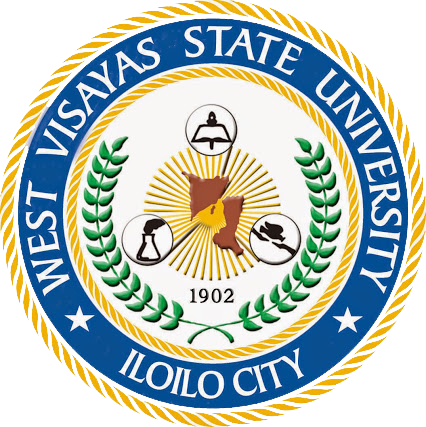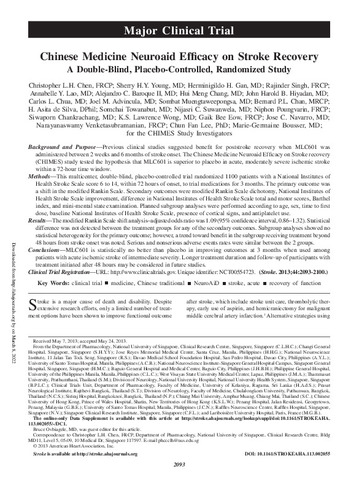| dc.contributor.author | Navarro, Jose C. | |
| dc.contributor.author | Chen, Cristopher LH. | |
| dc.contributor.author | Lee, Chun F. | |
| dc.contributor.author | Herminigildo, Gan H. | |
| dc.contributor.author | Lao, Annabelle Y. | |
| dc.contributor.author | Venketasubramanian, Narayanaswamy | |
| dc.contributor.author | Baroque, Alejandro II C. | |
| dc.contributor.author | Hiyadan, John Harold B. | |
| dc.contributor.author | Chua, Carlos L. | |
| dc.contributor.author | San Jose, Ma Cristina | |
| dc.contributor.author | Advincula, Joel M. | |
| dc.contributor.author | Venketasubramanian, Narayanaswamy | |
| dc.contributor.author | CHIMES-E Study Investigators | |
| dc.coverage.spatial | Philippines | en |
| dc.date.accessioned | 2023-09-29T08:04:55Z | |
| dc.date.available | 2023-09-29T08:04:55Z | |
| dc.date.issued | 2017-04 | |
| dc.identifier.citation | Navarro, J. C., Chen, C. L., Lee, C. F., Gan, H. H., Lao, A. Y., Baroque, A. C., Hiyadan, J. H. B., Chua, C. L., San Jose, M. C., Advincula, J. M., Venketasubramanian, N., & CHIMES and CHIMES-E Study Investigators. (2017). Durability of the beneficial effect of MLC601 (NeuroAiD™) on functional recovery among stroke patients from the Philippines in the CHIMES and CHIMES-E studies. International Journal of Stroke, 12(3), 285-291. | en |
| dc.identifier.issn | 1747-4930 | |
| dc.identifier.uri | https://hdl.handle.net/20.500.14353/301 | |
| dc.description.abstract | Background and Aim:
A pre-specified country analysis of subjects from the Philippines in the CHInese Medicine NeuroAiD Efficacy on Stroke recovery (CHIMES) Study showed significantly improved functional and neurological outcomes on MLC601 at month (M) 3. We aimed to assess these effects on long-term functional recovery in the Filipino cohort.
Methods:
The CHIMES-E (extension) Study evaluated subjects who completed three months of randomized placebo-controlled treatment in CHIMES up to two years. Blinding of treatment allocation was maintained and all subjects received standard stroke care and rehabilitation. Modified Rankin Score (mRS) and Barthel Index (BI) were assessed in-person at M3 and by telephone at M6, M12, M18, M24. Odds ratios (OR) with corresponding 95% confidence intervals (CI) for functional recovery using ordinal analysis of mRS and for achieving functional independence (mRS 0-1 or BI ≥ 95) at each time point were calculated, adjusting for age, sex, baseline National Institute of Health Stroke Scale (NIHSS), onset-to-treatment time (OTT) and pre-stroke mRS.
Results:
The 378 subjects (MLC601 192, placebo 186) included in CHIMES-E from the Philippines (mean age 60.2 ± 11.1) had more women (p < 0.001), worse baseline NIHSS (p < 0.001) and longer onset to treatment time (p = 0.002) compared to other countries. Baseline characteristics were similar between treatment groups. The treatment effect of MLC601 seen at M3 peaked at M6 with OR for mRS shift of 1.53 (95% CI 1.05–2.22), mRS dichotomy 0–1 of 1.77 (95% CI 1.10–2.83), and BI ≥ 95 of 1.87 (95% CI 1.16–3.02). The beneficial effect persisted up to M24.
Conclusion:
The beneficial effect of MLC601 seen at M3 in the Filipino cohort is durable up to two years after stroke. | en |
| dc.description.sponsorship | CHIMES and/or CHIMES-E Study Investigators: Philippines—Jose C Navarro, Herminigildo H Gan, Annabelle Lao, Alejandro Baroque II, Johnny Lokin, John Harold B Hiyadan, M Socorro Sarfati, Randolph John Fangonillo, Neil Ambasing, Carlos Chua, M Cristina San Jose, Joel Advincula, Eli John Berame, Maria Teresa Canete. Singapore—Narayanaswamy Venketasubramanian, Sherry HY Young, Marlie Jane Mamauag, San SanTay, Shrikant Pande, Umapathi Thirugnanam, Rajinder Singh, Hui Meng Chang, Deidre Anne De Silva, Bernard PL Chan, Vijay Sharma, Teoh Hock Luen. Thailand—Niphon Poungvarin, Sombat Muengtaweepongsa, Somchai Towanabut, Nijasri Suwanwela, Songkram Chotickanuchit, Siwaporn Chankrachang, Samart Nitinun. Sri Lanka—H Asita de Silva, Udaya Ranawake, Nirmala Wijekoon. Hong Kong—KS Lawrence Wong. Malaysia—Gaik Bee Eow.
The author(s) disclosed receipt of the following financial support for the research, authorship, and/or publication of this article: The CHIMES-E study was supported by the CHIMES Society, a nonprofit organization, and grants were received by CLHC from the National Medical Research Council of Singapore (grant numbers NMRC/1288/2011 and NMRC/1096/2006). | en |
| dc.language.iso | en | en |
| dc.publisher | SAGE Publications Inc. | en |
| dc.relation.uri | | en |
| dc.rights.uri | https://www.creativecommons.org/licenses/by/3.0/ | * |
| dc.subject | Acute stroke | en |
| dc.subject | Clinical trial | en |
| dc.subject | Long-term outcome | en |
| dc.subject | MLC601 | en |
| dc.subject | Philippines | en |
| dc.subject | Stroke recovery | en |
| dc.subject | NeuroAiD | en |
| dc.subject | CHInese Medicine NeuroAiD Efficacy on Stroke recovery | en |
| dc.subject | CHIMES | en |
| dc.subject | Modified Rankin Score | en |
| dc.subject | Barthel Index | en |
| dc.subject | National Institute of Health Stroke Scale | en |
| dc.subject | onset-to-treatment time | en |
| dc.subject | pre-stroke mRS | en |
| dc.subject | mRS | en |
| dc.subject | BI | en |
| dc.subject | NIHSS | en |
| dc.subject | OTT | en |
| dc.subject.lcsh | Cerebrovascular disease--Patients | en |
| dc.subject.lcsh | Cerebrovascular disease | en |
| dc.subject.lcsh | Neuroprotective agents | en |
| dc.subject.lcsh | Medicine, Chinese | en |
| dc.subject.mesh | Neuroprotective Agents | en |
| dc.subject.mesh | Drugs, Chinese Herbal | en |
| dc.subject.mesh | Stroke | en |
| dc.subject.mesh | Neurology | en |
| dc.subject.mesh | Cerebrovascular Trauma | en |
| dc.subject.mesh | Stroke Rehabilitation | en |
| dc.subject.mesh | Treatment Outcome | en |
| dc.title | Durability of the beneficial effect of MLC601 (NeuroAiD™) on functional recovery among stroke patients from the Philippines in the CHIMES and CHIMES-E studies | en |
| dc.type | Article | en |
| dcterms.accessRights | Open access | en |
| dc.citation.journaltitle | International Journal of Stroke | en |
| dc.citation.volume | 12 | en |
| dc.citation.issue | 3 | en |
| dc.citation.firstpage | 285 | en |
| dc.citation.lastpage | 291 | en |
| dc.identifier.doi | 10.1177/1747493016676615 | |
| local.isIndexedBy | ISI | en |
| local.isIndexedBy | Scopus | en |






